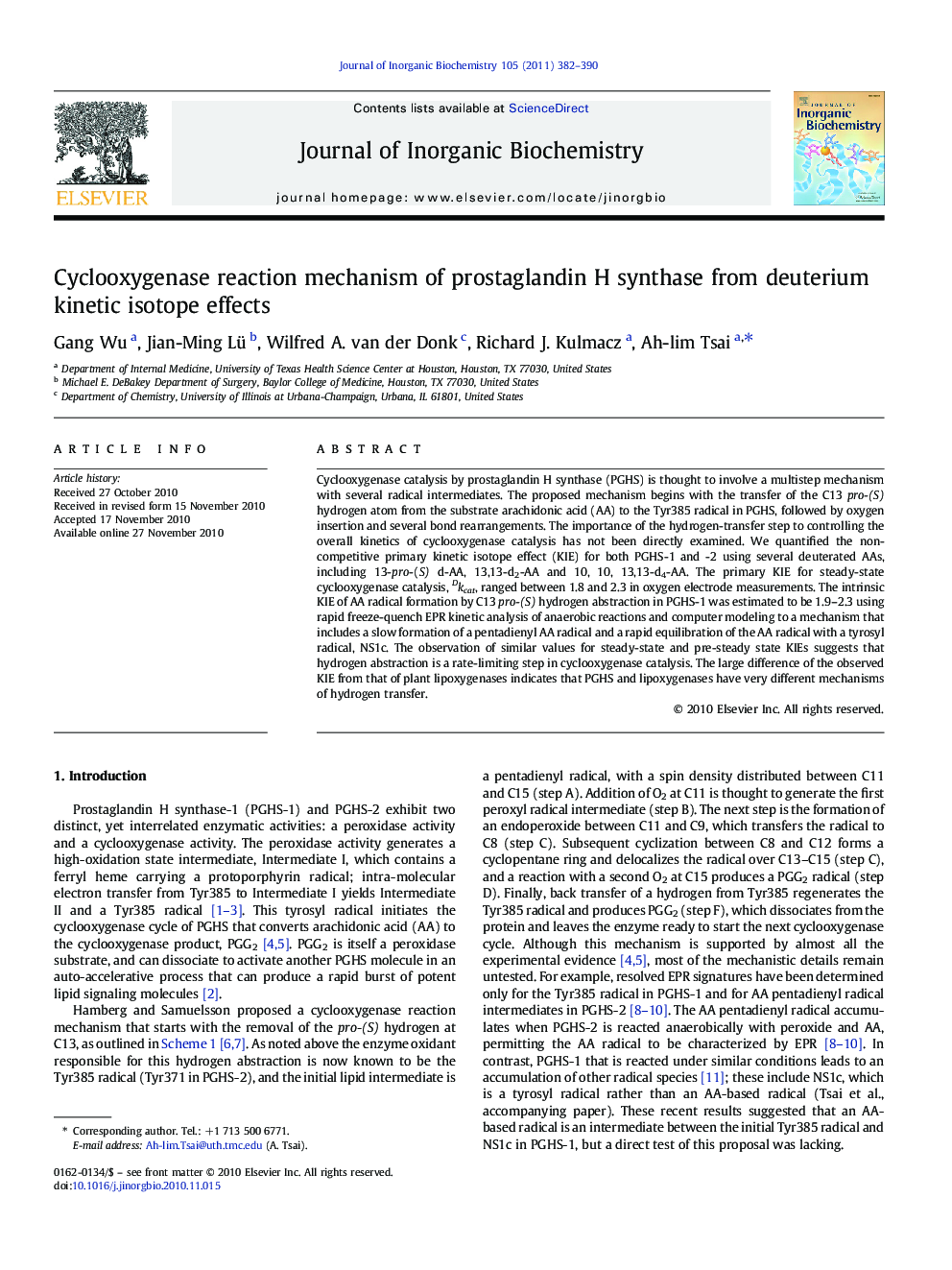| Article ID | Journal | Published Year | Pages | File Type |
|---|---|---|---|---|
| 1316022 | Journal of Inorganic Biochemistry | 2011 | 9 Pages |
Cyclooxygenase catalysis by prostaglandin H synthase (PGHS) is thought to involve a multistep mechanism with several radical intermediates. The proposed mechanism begins with the transfer of the C13 pro-(S) hydrogen atom from the substrate arachidonic acid (AA) to the Tyr385 radical in PGHS, followed by oxygen insertion and several bond rearrangements. The importance of the hydrogen-transfer step to controlling the overall kinetics of cyclooxygenase catalysis has not been directly examined. We quantified the non-competitive primary kinetic isotope effect (KIE) for both PGHS-1 and -2 using several deuterated AAs, including 13-pro-(S) d-AA, 13,13-d2-AA and 10, 10, 13,13-d4-AA. The primary KIE for steady-state cyclooxygenase catalysis, Dkcat, ranged between 1.8 and 2.3 in oxygen electrode measurements. The intrinsic KIE of AA radical formation by C13 pro-(S) hydrogen abstraction in PGHS-1 was estimated to be 1.9–2.3 using rapid freeze-quench EPR kinetic analysis of anaerobic reactions and computer modeling to a mechanism that includes a slow formation of a pentadienyl AA radical and a rapid equilibration of the AA radical with a tyrosyl radical, NS1c. The observation of similar values for steady-state and pre-steady state KIEs suggests that hydrogen abstraction is a rate-limiting step in cyclooxygenase catalysis. The large difference of the observed KIE from that of plant lipoxygenases indicates that PGHS and lipoxygenases have very different mechanisms of hydrogen transfer.
Graphical AbstractThe intrinsic rate of the 13-pro-(S) H-transfer from AA to the Tyr385 radical in cyclooxygenase catalysis was determined by deuterium kinetic isotope effect measurements and computer modeling involving a fast equilibrium between AA pentadienyl radical and a new tyrosyl radical, NS1c. KIE of this H-transfer was ~ 2, much smaller than the H-transfer in plant lipoxygenases, where a H-tunneling mechanism is involved.Figure optionsDownload full-size imageDownload as PowerPoint slide
